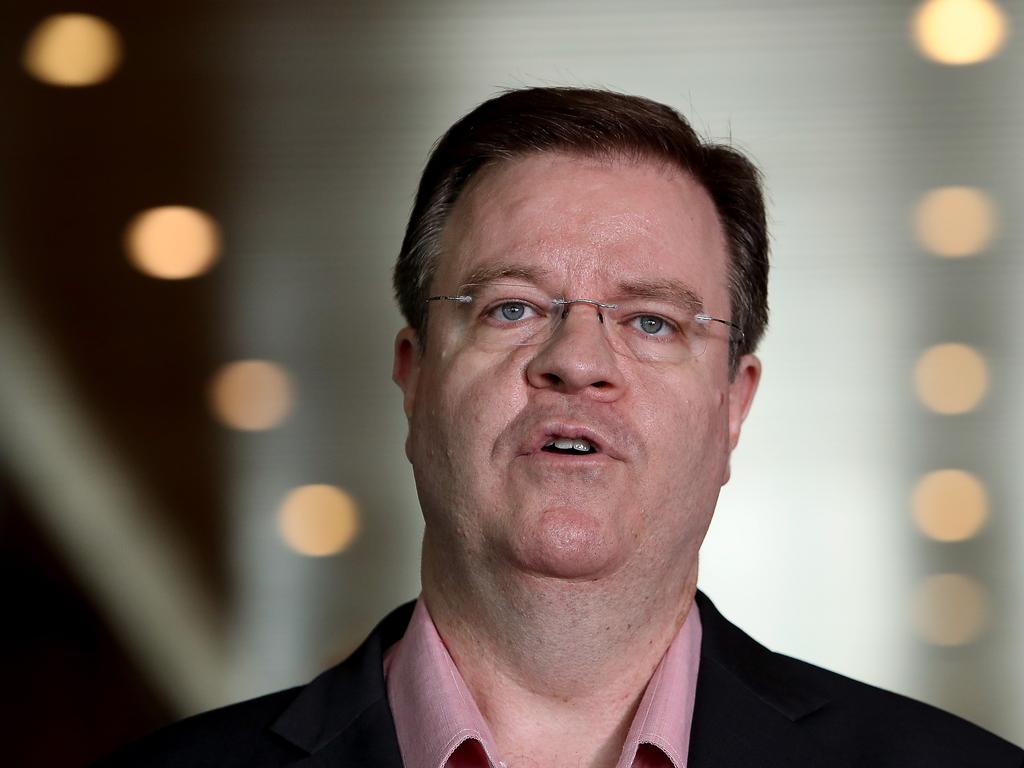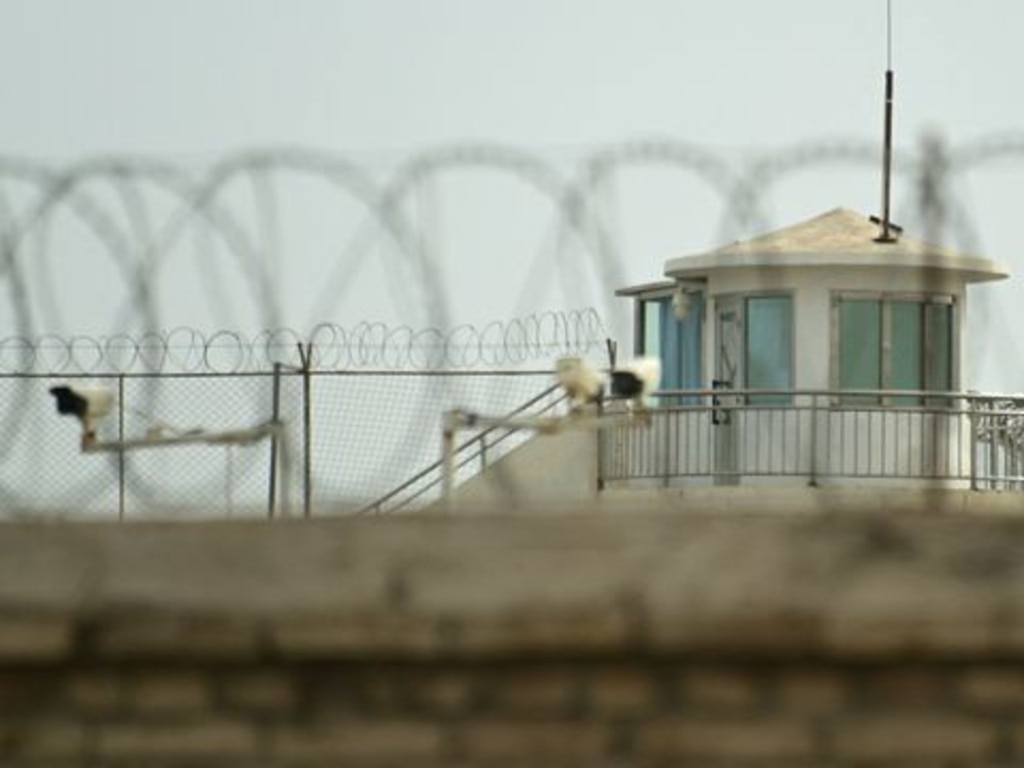‘Think of the human cost’: the woman challenging ‘clean’ power revolution
Ramila Chanisheff has a simple plea for Australians: Don’t build the green revolution on the back of slave labour.
It’s a busy day at the community hall in Coolah, a scenic hamlet in the central west of NSW where the Independent Planning Commission has come to hear residents’ views about a proposed wind farm south of the town.
About 30 locals have registered to speak, mostly against the Valley of the Winds project, and one by one they move to the podium in the packed hall to outline their concerns: bushfire risks, land values, pressure on services – and the fact their town will be surrounded by more than 300 turbines across two planned wind farms.
After lunch, a voice comes down the phone line. “We’ve got Ramila Chanisheff. Ramila, are you with us?” commissioner Richard Pearson asks.
Chanisheff is calling from South Australia. Unlike most other speakers today she doesn’t own land in Coolah or have a special connection to the region but, nevertheless, this project and others like it are deeply personal.
“I am representing the Uighur community. I am coming from the angle of the human cost of making wind turbines, even before they hit Australian shores,” she tells the gathering.
This is not Chanisheff’s first planning meeting; she has spoken at about five other hearings including for the Wallaroo solar project on the NSW-ACT border in July 2024.
“I am here to talk about slave labour, forced Uighur labour that is used to make, to mine and to supply the solar panels that come out of China,” she says.

Chanisheff, president of the Australian Uyghur Tangritagh Women’s Association, challenges the notion of clean green energy when it is delivered by materials or components likely sourced from the land of her birth, the northwestern Chinese province of Xinjiang, or East Turkistan as she knows it.
She was born in Urumqi, the region’s capital, and moved with her parents to Australia after the Cultural Revolution. This is home but she can’t turn her back on the situation in Xinjiang where many of her relatives still live and where she can no longer visit because of feared reprisals over her vocal stance.
Where most people see solar panels on their roofs or farms as a source of cheap power, she sees people from her homeland working in forced labour camps to feed the world’s hunger for cheap renewable energy.
There’s nothing clean or virtuous, Chanisheff says, about supporting industries built on the back of oppression and slavery.
This is not just an issue consuming the expat Uighur community or human rights activists; across the globe companies are trying to clean up their renewables supply chains along with those of other imported goods – from electric cars to tinned tomatoes and cotton products – connected with the Xinjiang region.
It has been estimated about one million Uighurs and other ethnic minorities have been detained in internment centres or forced into work camps under the guise of re-education and poverty relief. The Chinese government rejects claims of ongoing persecution and human rights abuses.
Concern has focused on the renewables industry where China dominates the entire production process to supply more than 75 per cent of solar panels and battery technologies. It’s estimated about 35 per cent the world’s polysilicon, a mined quartz used in solar modules, comes from the Xinjiang region. The European Bank for Reconstruction and Development says there is also a high concentration of wind turbines and components from the region.
Australia imports more than 90 per cent of its solar modules from China and to reach ambitious net-zero targets millions of new units are needed, raising alarm about over-reliance and energy security along with slavery risks. The federal government has promised to invest billions in local manufacturing and critical minerals development, and industry groups have pledged to ensure supply chains do not support modern slavery, but Chanisheff says meaningful progress has been painfully slow.

“The Australian government just does not seem to be interested in cleaning up the supply chain,” she says.
“We were hoping that industries would step up but obviously they haven’t. They source their products from the cheapest supplier, and the cheapest supplier happens to be China.”
The Clean Energy Council and NSW Anti-slavery Commissioner James Cockayne joined forces in late 2023 to announce an Australian-first code of practice on managing modern slavery risks in renewable energy value-chains. “Slavery cannot be the price of decarbonisation,” Cockayne said.
The code was due in March 2024 but still has not been produced, with no explanation for the delay. A spokesperson for the Office of the Anti-slavery Commissioner says a draft is expected to be released for public feedback in the coming months, while the Clean Energy Council says the sector is “actively collaborating” on how to minimise and eventually eliminate modern slavery within its global supply chains.
“The issue of modern slavery in supply chains, while not unique to our sector, is one that Australia’s clean energy industry takes seriously and is committed to addressing,’’ council chief policy and impact officer Arron Wood says.
Cockayne acknowledged in a 2023 report the “growing evidence of serious modern slavery risks” in the production of lithium-ion batteries, solar panels and wind turbines. “Particular attention has been drawn to evidence that a high proportion of … solar energy is produced using solar panels that contain polysilicon (a key ingredient) from Xinjiang, where there is evidence of state-sponsored forced labour practices in its manufacturing,” he said.

Cockayne said this evidence created uncertainty for the renewables transition and risked disrupting or slowing major infrastructure projects, increasing costs and restricting access to finance or insurance.
Last week British Energy Minister Ed Miliband announced plans to prohibit GB Energy, the national energy company, from sourcing solar panels linked to slave labour in China in a move critics say could threaten the country’s net-zero ambitions. Clean energy entities are also alert to reputational damage, with The Australian recently revealing that Labor-linked climate charity the Smart Energy Council has been receiving thousands of dollars from energy firms black-listed in the US over concerns they use slave labour. The US has listed 144 Chinese companies under the Uighur Forced Labor Prevention Act that came into force in 2021.
Plans to tighten importation laws in Australia passed the Senate in 2021 but stalled in the House of Representatives and have never been revived.
At the Valley of Winds hearing in Coolah, commissioner Pearson asks wind farm developer ACEN to outline how it will ensure materials are not sourced from forced labour. The company is committed to addressing modern slavery risks, development manager Megan Richardson says. “We have signed the Clean Energy Council’s pledge against modern slavery, which commits us to working with the industry,’’ she says.
The problem, Chanisheff says, is that companies can’t freely visit the Xinjiang region to verify labour conditions or audit supplies independently.
“I think industries give up. Because they don’t have independent access to the Xinjiang region to completely clear themselves from slave labour, they just say: ‘Oh, it’s a difficult situation. It’s complicated. We can’t get in there but the suppliers tell us it’s all good, so we trust them.’ ”
In the meantime, consumers looking to install solar panels on their roofs are caught in a dilemma, she says. What should they do? “They should inform themselves and look for alternatives to make sure that what they are buying hasn’t cost somebody’s life, somebody’s livelihood and affected a whole ethnic community,” she says.








To join the conversation, please log in. Don't have an account? Register
Join the conversation, you are commenting as Logout